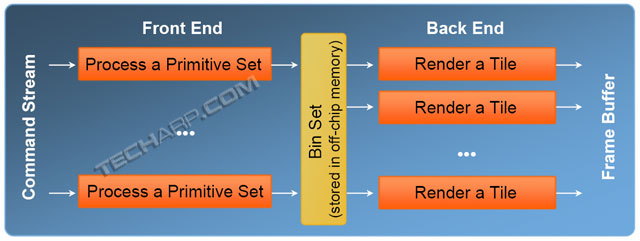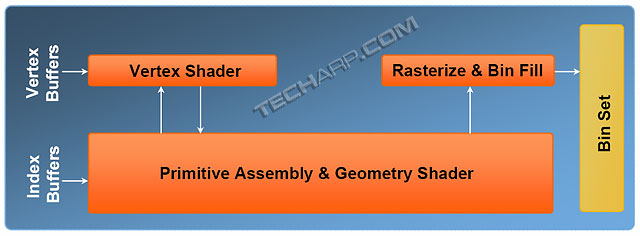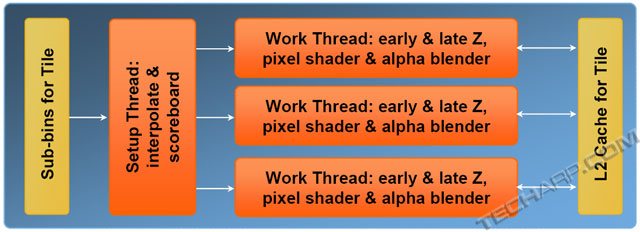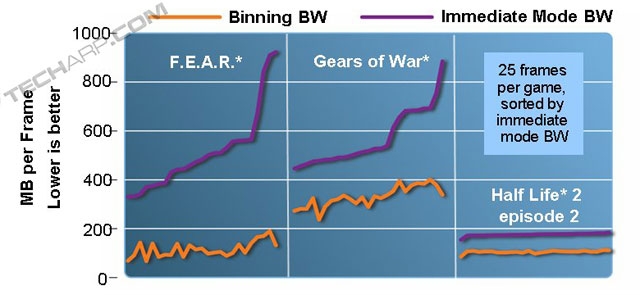The Larrabee Binning Renderer
This is the block diagram of the Larrabee Binning Renderer. It's divided into two parts. The Front End handles vertices while the Back End renders the pixels.

Larrabee Binning Renderer Block Diagram
Here's a closer look at the Front End which processes multiple separate primitive streams in parallel. The vertex shader processes 16 vertices simultaneously while the geometry shader is capable of handling 16 primitives at the same time. In this version of the renderer, the rasterizer is located in the front end. The results are then stored in a bin set, one for each primitive set.

Binning Renderer Front End (Vertices) Block Diagram
The Back End's Setup Thread then reads the results stored in the individual bin sets, interpolates them and then uses scoreboarding to process overlapping pixels. After that, three work Work Threads perform Z, pixel shading and blending operations. The final pixel data is stored in the L2 cache.

Binning Renderer Back End (Pixels) Block Diagram
This method of binning the vertex results from the Front End actually reduces the amount of bandwidth required. This is apparently because the tiles are stored in the L2 cache, allowing each pixel to be read and written only once. Here's a chart showing the amount of bandwidth required by the binning mode as opposed to the immediate (direct) mode.

Support Tech ARP!
If you like our work, you can help support out work by visiting our sponsors, participate in the Tech ARP Forums, or even donate to our fund. Any help you can render is greatly appreciated!
Page |
Topic |
|
1 |
||
2 |
||
3 |
||
4 |
• The
Larrabee Texture Sampler |
|
5 |
||
6 |
||
7 |
||
8 |
<<< How Larrabee Renders Graphics, Performance Scalability : Previous Page | Next Page : Examples Of 3D Features Supported By Larrabee >>>







 Add to Reddit
Add to Reddit
